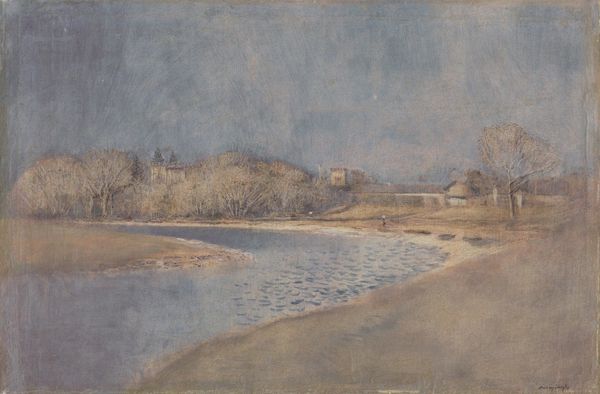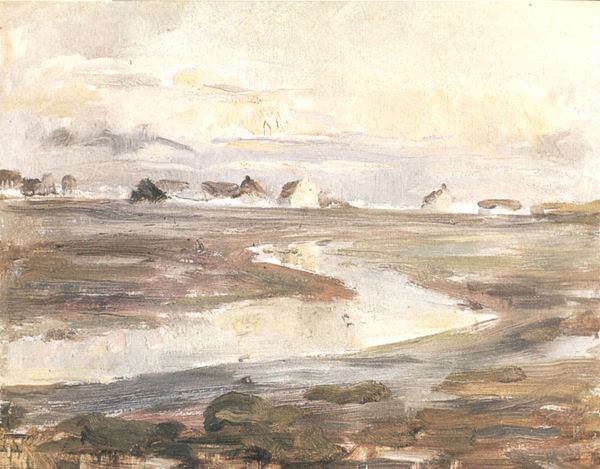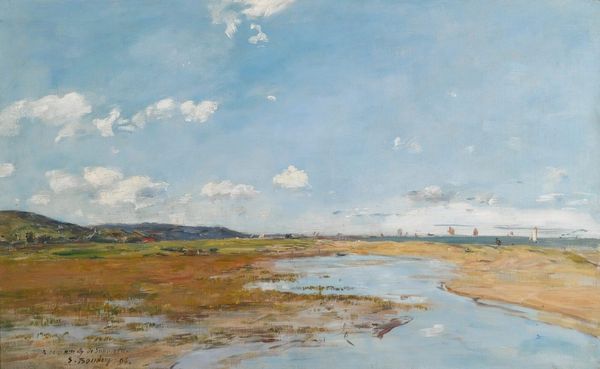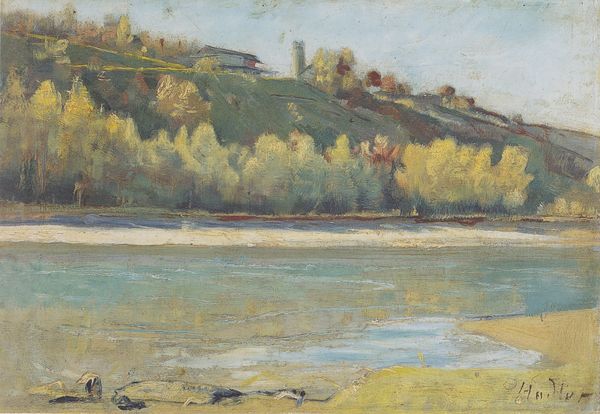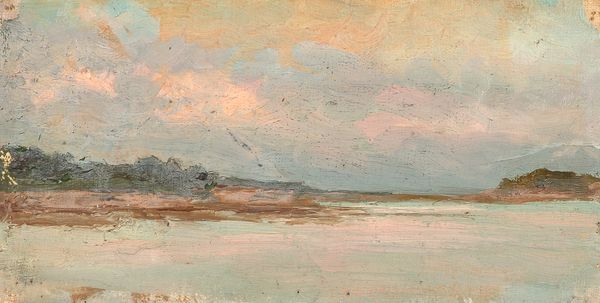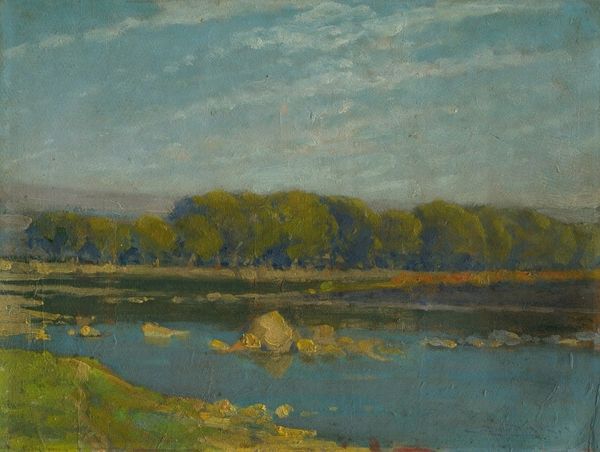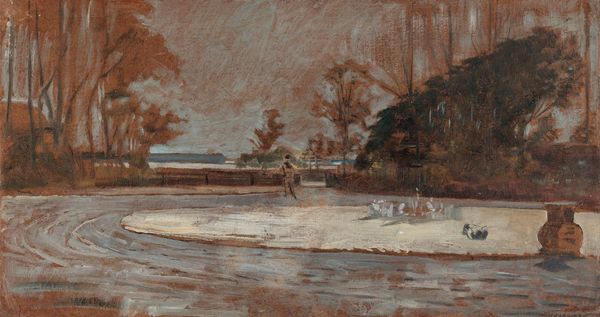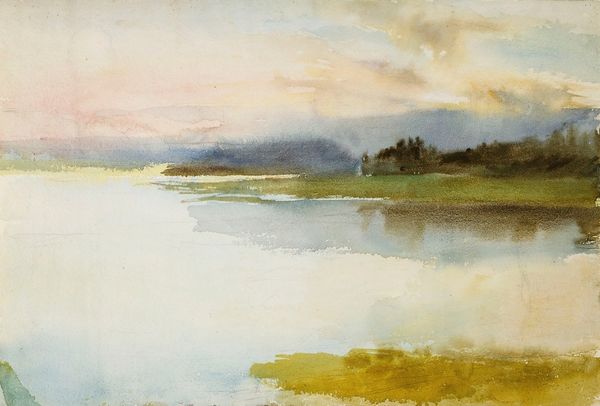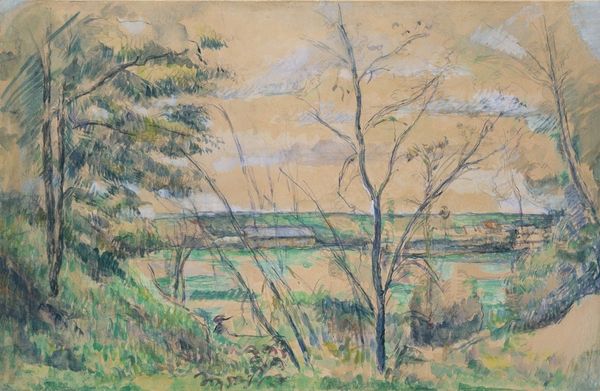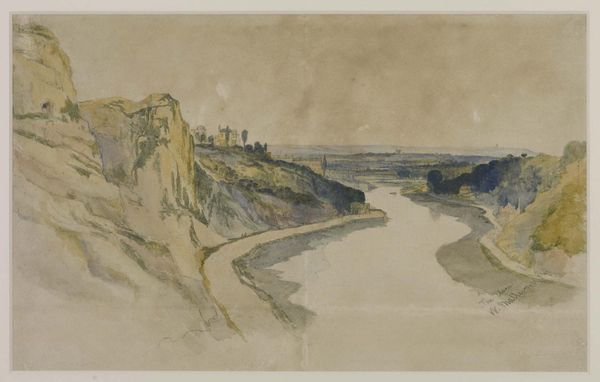
Copyright: Public Domain: Artvee
Editor: So this is "Spring Thaw," painted by Jacek Malczewski in 1905, it seems to be oil on canvas. The scene is so muted and still; it almost feels melancholic. What's your read on this piece? Curator: The melancholic mood is quite striking, isn't it? Looking at the thaw, beyond a literal depiction, one must ask what is implied for Malczewski’s Poland? Consider that 1905 was a time of significant social unrest in Poland, then partitioned under Russian, Prussian, and Austrian rule. Editor: So, the thawing landscape is maybe a metaphor? Are you suggesting the painting is reflecting Poland's political and social climate at the time? Curator: Exactly. The melting snow could symbolize the weakening grip of the occupying powers, the potential for renewal, a visual echo to the desire for freedom, for Polish identity. Notice how the light struggles to break through the heavy clouds? It is hope battling against oppression. Do you think the bare trees play into this theme? Editor: Yes, now that you point it out! They look so vulnerable, but they are also about to bud. There's an implicit promise there. Is it typical for Malczewski to imbue landscapes with political meaning? Curator: Malczewski was deeply engaged with Polish identity. He often intertwined national symbolism, mythology, and the contemporary struggles of the Polish people in his art, whether through landscapes, portraits, or allegorical scenes. Viewing it only as an Impressionist landscape ignores its complex political subtext. Editor: That’s incredible, I had no idea so much could be embedded in such a seemingly quiet scene. Curator: Indeed. It demonstrates how even landscape painting can engage in political dialogue and cultural resistance. Editor: I'll definitely look at landscapes differently from now on. Thanks for sharing your insight.
Comments
No comments
Be the first to comment and join the conversation on the ultimate creative platform.


